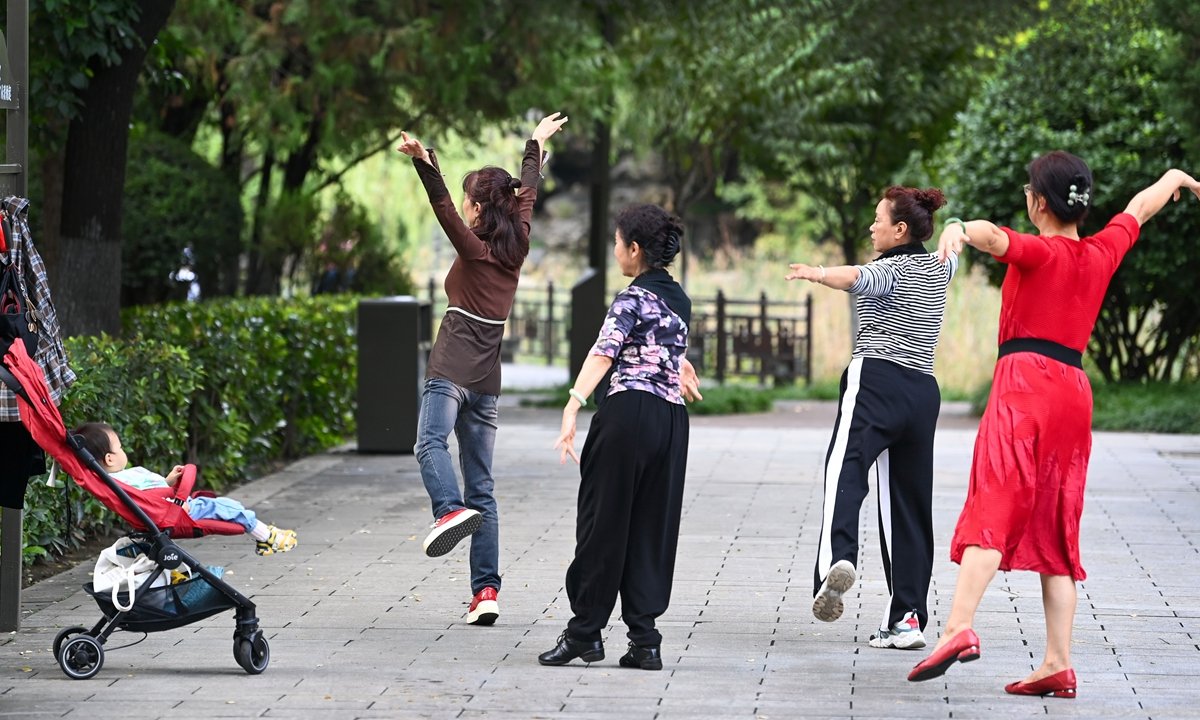Square dancing, locally referred to as guangchangwu, has long been an integral part of China’s rich cultural tapestry. A recent dazzling display of this tradition was evident in Guiyang, located in Southwest China’s Guizhou Province. Here, dance teams from various parts of the nation gathered, delivering a visual feast that ranged from modern hip-hop street dances, favored by the youth, to ethnic folk dances with a regional touch.
Guizhou, known for hosting the grassroots basketball event, the “Village BA,” was the chosen venue for the National Square Dance Competition, which was later fondly termed the Square Dance Night. This competition began in Beijing in June, with multiple provinces and regions holding their individual square dance championships. From the numerous participants, 25 top-tier square dance teams were selected to showcase their talents at the Square Dance Night, which became a symbol of celebration and cultural representation.
Square dancing is more than just a dance; it’s a cherished form of physical activity and social bonding, predominantly among the elderly. Groups gather in parks, plazas, and public squares to dance and revel in the joys of music. This ritual, usually witnessed post-supper, has become one of China’s unique features, especially to newcomers. These self-organized events emphasize the essence of community and have garnered recognition from China’s Ministry of Culture and Tourism.
Beijing-based sociologist Tang Shu commented on the significance of the Square Dance Night, noting its ability to showcase the diverse beauty of Chinese cultural life. This event not only echoes the traditional Chinese culture but also promotes the innovative development of square dancing in contemporary society. The National Square Dance Competition has become a platform fostering exchange and collaboration among square dance enthusiasts, further fueling their passion for the art.
Guizhou’s grassroots initiatives, like the Village Super League and the National Beautiful Rural Basketball Tournament, have been instrumental in promoting cultural appreciation. The events not only drew sports enthusiasts but also amplified the province’s cultural offerings. During the basketball event in March, Taipan village witnessed a surge of visitors. The locale was transformed into a vibrant cultural hub, featuring an array of ethnic-inspired products, including Miao embroidery, paper-cutting, hats, bags, and other essentials.
Square dancing, too, witnessed an innovative twist. The dance performance “Joyful Ordos” fused classic elements of Mongolian dance with cultural undertones of northern China, creating an enthralling amalgamation of tradition and modernity. Moreover, to ensure an immersive experience, attendees were presented with postcards featuring Guizhou’s iconic landmarks, folk crafts, and an assortment of local delicacies.
The trajectory of Chinese square dancing has witnessed several transformative phases. From initial challenges related to noise to its rapid rise in popularity, the nation has constantly adapted to accommodate this cultural gem. Regulatory measures were introduced, including volume control and specific timings, to ensure harmony between the dancers and the residents. Furthermore, to resolve venue clashes between sports enthusiasts and dancers, initiatives were taken to expand public spaces, reflecting China’s commitment to preserving both sport and cultural activities.
Chinese square dancing has evolved beyond just tradition. With modern music genres like K-pop now part of their repertoire, it attracts even the younger generation. A local enthusiast, a 70-year-old grandmother, emphasized its significance, stating, “For the elderly, it’s more than leisure; it’s a platform for socialization. We now have a stage to truly express ourselves.”
READ MORE:
